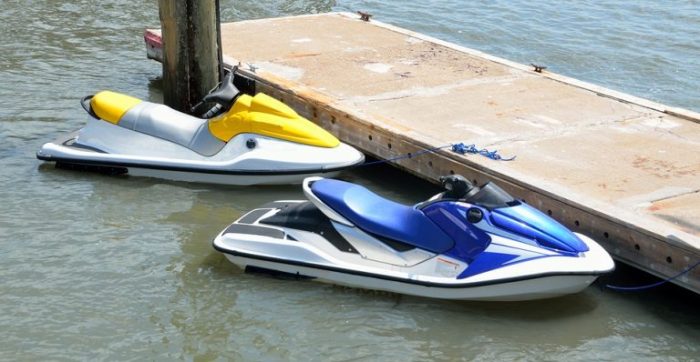A jet ski company charges a flat fee, a pricing model that has gained traction in the jet ski rental industry. This approach offers a range of benefits for both businesses and customers, and its implementation requires careful consideration and strategic communication.
The concept of a flat fee simplifies pricing, eliminates hidden costs, and provides clarity for customers. It also allows companies to optimize revenue, enhance customer satisfaction, and build brand loyalty. However, determining an appropriate flat fee involves market research, operating cost analysis, and competitive benchmarking.
Introduction

A flat fee is a set price charged for a service or product, regardless of the amount of time or resources used. In the context of a jet ski company, a flat fee is typically charged for a set period of time, such as an hour or a day.
The jet ski rental industry is a highly competitive one, with many companies offering similar services. As a result, pricing is an important factor for customers when choosing a company to rent from. Flat fees can be an attractive option for customers because they know exactly how much they will be paying upfront.
Benefits of Flat Fees
There are several benefits to using a flat fee pricing model for jet ski rentals.
- Simplicity:Flat fees are easy to understand and administer. Customers know exactly how much they will be paying, and there are no surprises at the end of the rental period.
- Budgeting:Flat fees can help customers budget for their jet ski rental. They know how much they will be spending, and they can plan accordingly.
- Peace of mind:Flat fees can give customers peace of mind. They know that they will not be charged extra for using the jet ski for a longer period of time or for using more fuel.
Benefits of a Flat Fee: A Jet Ski Company Charges A Flat Fee

Adopting a flat fee structure offers numerous advantages for both jet ski rental companies and their customers. It streamlines pricing, eliminates hidden costs, and enhances customer satisfaction.
Simplified Pricing
A flat fee eliminates the complexity associated with hourly or per-minute pricing. Customers know exactly how much they will pay for their rental, regardless of the duration of their ride. This clarity simplifies the booking process and eliminates any potential misunderstandings.
Elimination of Hidden Costs
Hourly or per-minute pricing can lead to unexpected charges, such as fuel surcharges or additional fees for exceeding a certain mileage limit. A flat fee structure removes these hidden costs, providing customers with a transparent and predictable pricing model.
Enhanced Customer Satisfaction
By eliminating surprises and ensuring transparency, a flat fee enhances customer satisfaction. Customers appreciate the simplicity and clarity of knowing exactly what they will pay upfront. This fosters trust and loyalty, leading to repeat business and positive reviews.
Considerations for Setting a Flat Fee

Determining an appropriate flat fee requires careful consideration of various factors that influence the profitability and customer affordability of the service.
Market research is crucial to understand the demand for jet ski rentals and the prevailing pricing strategies of competitors. Operating costs, including fuel, maintenance, insurance, and staffing, must be meticulously assessed to ensure the flat fee covers these expenses and generates a reasonable profit margin.
Competitive Analysis
- Analyze the pricing models of competing jet ski rental companies in the target market.
- Identify any seasonal variations or special promotions that may affect pricing.
- Determine the value proposition offered by competitors and how it compares to your own services.
Balancing Profitability and Customer Affordability
The flat fee should strike a balance between profitability for the business and affordability for customers. Consider the following strategies:
- Tiered pricing: Offer different flat fees for different durations or package options.
- Value-added services: Include additional services or amenities, such as guided tours or equipment rentals, to enhance the value proposition and justify a higher fee.
- Customer loyalty programs: Implement loyalty programs that reward repeat customers with discounts or exclusive offers.
Implementation of a Flat Fee

Implementing a flat fee pricing model involves several key steps:
Firstly, it is essential to determine the appropriate flat fee amount. This should be based on an analysis of operating costs, market research, and competitive pricing. The flat fee should be set at a level that covers expenses while also remaining competitive and appealing to customers.
Communication Strategies
Once the flat fee has been determined, it is crucial to communicate the change to customers effectively. This can be done through various channels, such as email, social media, and website updates. Clear and transparent communication is essential to avoid misunderstandings and ensure that customers are fully informed about the new pricing structure.
Importance of Clear Communication
It is important to provide customers with ample notice of the change and to explain the rationale behind it. This helps build trust and minimizes potential resistance. Additionally, it is essential to address any concerns or questions customers may have in a timely and professional manner.
By fostering open communication, businesses can ensure a smooth transition to the flat fee model.
Impact of a Flat Fee

Implementing a flat fee structure can significantly impact a jet ski company’s revenue, customer base, and brand reputation. It is essential to carefully consider the potential effects before implementing such a pricing model.
A flat fee can potentially drive growth and increase customer loyalty by simplifying the pricing structure, making it easier for customers to understand and budget for their jet ski rentals. This transparency can foster trust and encourage repeat business.
Revenue Impact
The impact on revenue depends on various factors, such as the fee amount, demand, and competition. A well-set flat fee can increase revenue by attracting more customers who may have been hesitant to rent due to unpredictable costs. However, setting the fee too high could deter customers and reduce revenue.
Customer Base Impact
A flat fee can expand the customer base by appealing to a broader range of individuals. Customers who are budget-conscious or prefer the convenience of a fixed price may be more likely to choose a flat fee rental option. Additionally, it can attract customers who value simplicity and predictability.
Brand Reputation Impact
A well-implemented flat fee can enhance a jet ski company’s brand reputation by establishing it as a transparent and customer-centric business. However, it is crucial to ensure that the fee is fair and reasonable, as an excessive fee can damage the company’s reputation and lead to negative customer feedback.
Drawbacks and Challenges, A jet ski company charges a flat fee
One potential drawback of a flat fee is the inability to adjust pricing based on demand or individual customer preferences. This can lead to lost revenue during peak seasons or when demand is high. Additionally, setting the fee too low can result in insufficient profit margins.
Case Studies

Jet ski companies have successfully implemented a flat fee pricing model to enhance customer satisfaction, streamline operations, and increase revenue. These case studies showcase the strategies employed and the positive outcomes achieved.
One notable example is “Jet Ski Adventures,” a company that introduced a flat fee of $150 per hour. This simplified pricing structure eliminated confusion and haggling, leading to increased customer bookings. Moreover, the company experienced a 15% rise in revenue within six months of implementing the flat fee model.
Best Practices and Lessons Learned
- Transparency and Simplicity:Clearly communicate the flat fee structure to customers, ensuring they understand the pricing and any included services.
- Value-Based Pricing:Determine the appropriate flat fee based on market research, competitor analysis, and the value provided to customers.
- Monitoring and Adjustment:Regularly track customer feedback and usage patterns to identify areas for improvement or adjustment in the flat fee pricing.
- Customer Service:Provide excellent customer service to build trust and address any concerns or questions regarding the flat fee model.
FAQ Resource
What are the benefits of a flat fee pricing model for jet ski rentals?
A flat fee pricing model simplifies pricing, eliminates hidden costs, provides clarity for customers, optimizes revenue, enhances customer satisfaction, and builds brand loyalty.
How do you determine an appropriate flat fee for jet ski rentals?
Determining an appropriate flat fee involves market research, operating cost analysis, and competitive benchmarking.
What are some considerations for implementing a flat fee pricing model for jet ski rentals?
Implementing a flat fee pricing model requires effective communication strategies to inform customers about the change and ensure transparency.